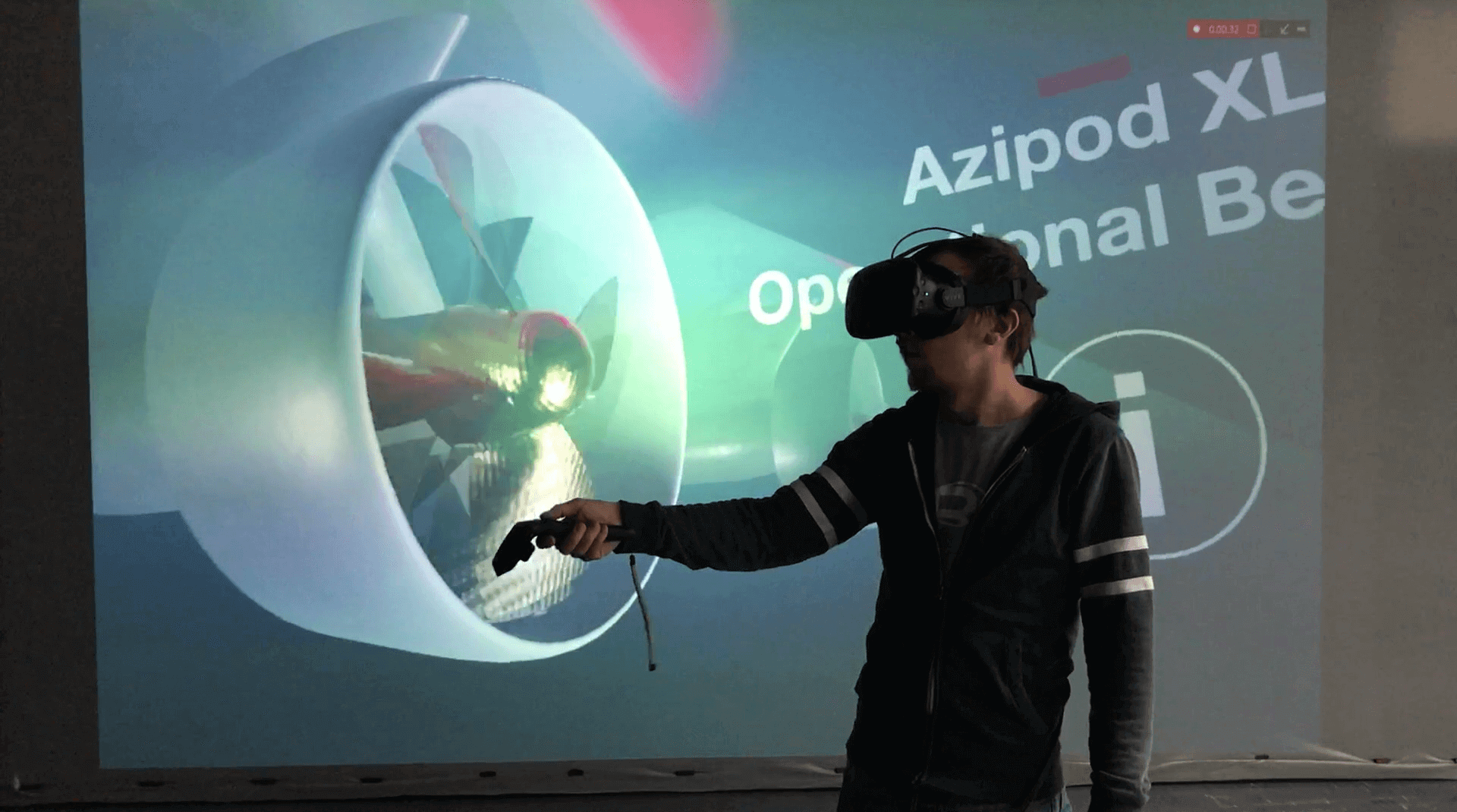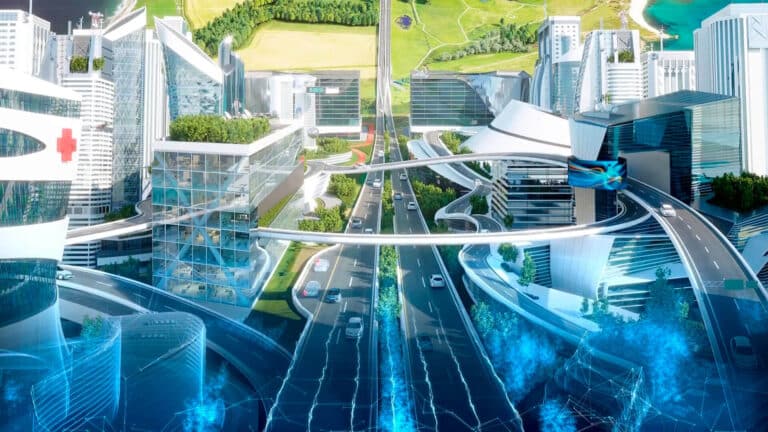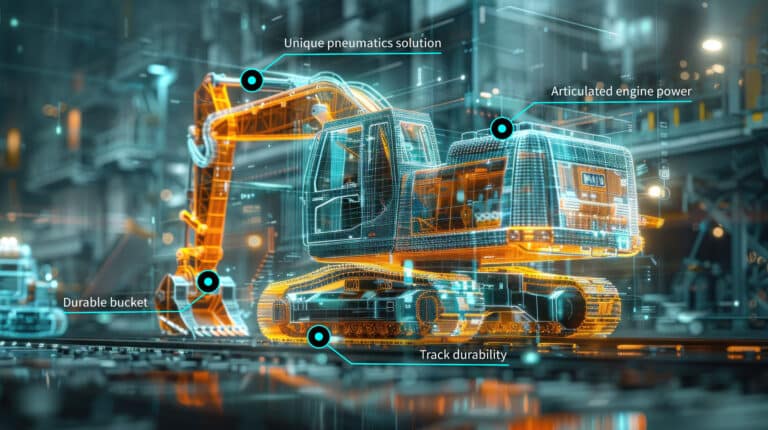Engage a new generation of talent
As many companies face an aging workforce, HR departments need effective ways to recruit a new generation of employees. One of the ways to engage millennial job candidates is to include immersive and experiential elements in the recruitment and onboarding processes.
A 2017 study of 18,000 professionals and students across generations X, Y and Z from 19 countries found that Gen Z was most enthusiastic about the potential of VR, and Gen Y saw VR as the technology most likely to revolutionise their work in the coming decade. The researchers suggest companies should consider VR as a tool for recruiting talent from these generations.
Many leading companies have already turned to Virtual Reality to help them recruit the brightest young talent. For example, Deutsche Bahn has a workforce nearing retirement age, and wants to appeal to younger candidates. By incorporating VR into its career fair presence, they have succeeded in getting the attention of younger applicants, increasing the volume and quality of applications from this target demographic.
VR can also help companies simply stand out from the competition at busy recruitment events. For example, the British Army saw applications increase 66% since introducing VR simulations to job fairs.
Showcase company culture and brand
Many companies opt to use VR to communicate a digitally savvy and forward-thinking company brand, but VR can also practically help showcase company culture. Virtual Reality tours of company offices and headquarters are a popular way to give potential employees a better sense of working for a company. Mirroring real-life experiences and allowing users to walk in someone else’s shoes were cited among the top benefits of XR in the workplace by respondents in a 2019 survey carried out by law firm Perkins Coie and the XR Association.
VR allows candidates to see and experience whether a job or a workplace is a good fit for them culturally, and in terms of the actual contents of the role. VR can help candidates get a better idea of a job’s requirements, thus leading to higher retention rate later on.
For example, Toyota High System uses VR tours of their headquarters at college recruitment fairs to give candidates a better sense of the company. Meanwhile AT&T recruiters use VR to let students walk through a typical day on the job, and Jet, a Walmart-owned competitor to Amazon, uses VR for office tours and employee testimonials, designed to give candidates a flavour of the company culture.

Assess skills, aptitude and behaviour
VR based simulations can be used to assess candidates’ aptitude, behaviour, skills and responses as part of broader recruitment activities. Simulation exercises allow for assessment of a candidate’s genuine response in a given situation, instead of asking about their response hypothetically, for example in a questionnaire or interview. In VR based assessment, recruiters can observe a candidate performing specific tasks, relevant to the job they are applying for.
For example, Accenture UK and Ireland have incorporated VR in their graduate recruitment programme by replacing the traditional group-based testing with individual Virtual Reality based assessment. VR based simulations allow the assessment of applicants’ core skills and responses, leading to a truer idea of an individual’s potential than say a competence questionnaire.
L’Oreal UK have aligned their graduate recruitment experience to their innovation-oriented brand. A virtual tour of the workplace and a virtual meeting scenario are available to better acquaint the candidates with the company culture, and VR tools are further used to test applicants’ responses to the workplace and to assess their personality and situational judgement.
Engage, assess and onboard with gamified VR
Combining VR and gamification can make the recruitment process more fun and attractive for younger applicants, increasing volume of applications. In assessment situations, a game element can also reduce stress and pressure, allowing candidates to perform to their best ability.
An example of successful use of gamification in recruitment comes from Jaguar, who created a free mixed reality app that allowed candidates to play demanding code-breaking games. Under the guise of fun, Jaguar was able to effectively test the curiosity, persistence, lateral thinking and problem-solving ability of candidates. The most successful candidates were fast-tracked through the recruitment process.
Elsewhere, the International Committee of the Red Cross uses gamified VR to familiarise its delegates with the dangers they face during missions. People hired as delegates typically get only two weeks of intensive onboarding training before they are sent out to the field. Gamification increases training effectiveness while lowering costs.

Improve onboarding experience
VR can add immersion and engagement to pre-existing onboarding programmes, appealing particularly to the millennial workforce. In blended models, VR can complement both traditional face-to-face methods and online onboarding, where 360 videos can be enjoyed with or without a VR headset. Multi-user VR enables effective onboarding sessions with an experienced employee guiding several new hires in a shared virtual environment.
A key benefit of VR lies in its experiential, visceral quality, resembling real-life experience more than a ‘media’ experience. The physical engagement and presence during a VR experience increases emotional responsiveness, and leads to better memory function than when using other training tools, such as videos or text-based materials. This means that VR based training will ‘stick’ faster.
The transition from onboarding to workplace learning can be a critical juncture in a new employee’s learning journey. Extended reality applications beyond VR can assist in a seamless integration between the onboarding process and on-the-job guidance to avoid learning gaps and reduce new hire turnover rate. Read more about these applications.
When to use VR for onboarding
As with any tool, there are particular situations in which Virtual Reality offers significant value added over other methods of onboarding. They are neatly captured in the acronym DICE, which stands for situations which would be Dangerous (for example, fire-fighting drills), Impossible (radiation hazards), Counterproductive (practising hostile customer service scenarios) or Expensive (due to travel, staff or machinery costs) to create in real life.
Top tips for including VR in recruitment and onboarding
• As with all technologies, VR apps need to be easy to use, intuitive and add value to the user experience. Conceptual work needs to be done carefully to reap full value of VR.
• Choose the appropriate VR content and equipment based on the number of anticipated users and length of anticipated use. Shorter content & less expensive gear works best for higher volume traffic.
• Virtual environments are useful for creating scenarios that require larger spaces than are practical to arrange for the recruitment or onboarding setting.
• When considering using VR for onboarding, remember DICE: virtual reality offers incomparable value when educating new hires on anything that in real-life would be risky, expensive or counter-productive.
Read more:
Stereoscape’s Mikko Alanko tells how to start using VR in learning and onboarding processes

